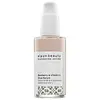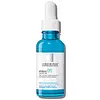What's inside
What's inside
 Key Ingredients
Key Ingredients

 Benefits
Benefits

 Concerns
Concerns

 Ingredients Side-by-side
Ingredients Side-by-side

Aloe Barbadensis Leaf Juice
Skin ConditioningCetearyl Alcohol
EmollientGlycerin
HumectantSqualane
EmollientCapryloyl Glycerin/Sebacic Acid Copolymer
Skin ConditioningDiheptyl Succinate
EmollientMica
Cosmetic ColorantTitanium Dioxide
Cosmetic ColorantBakuchiol
AntimicrobialTocopherol
Antioxidant3-O-Ethyl Ascorbic Acid
Skin ConditioningGlycolic Acid
BufferingSodium Phytate
Sodium Hyaluronate
HumectantHydrolyzed Sodium Hyaluronate
Skin ConditioningAzelaic Acid
BufferingZinc Oxide
Cosmetic ColorantXanthan Gum
EmulsifyingLinoleic Acid
CleansingCetearyl Glucoside
EmulsifyingArnica Montana Flower Extract
MaskingSimmondsia Chinensis Seed Wax
Skin ConditioningBorago Officinalis Extract
EmollientCalendula Officinalis Flower Extract
MaskingChamomilla Recutita Flower Extract
MaskingSalvia Officinalis Leaf Extract
CleansingDehydroacetic Acid
PreservativeBenzyl Alcohol
PerfumingPotassium Sorbate
PreservativeLactic Acid
BufferingTripeptide-29
Skin ConditioningHydrolyzed Lupine Protein
Skin ConditioningCentella Asiatica Meristem Cell Culture
AntioxidantLavandula Angustifolia Oil
MaskingCitrus Aurantium Dulcis Oil
MaskingHelianthus Annuus Seed Oil
EmollientArctostaphylos Uva Ursi Leaf Extract
Skin ConditioningWater
Skin ConditioningGlycyrrhiza Glabra Root Extract
BleachingEthylhexylglycerin
Skin ConditioningTin Oxide
AbrasiveCaesalpinia Sappan Bark Extract
Skin ConditioningAloe Barbadensis Leaf Juice, Cetearyl Alcohol, Glycerin, Squalane, Capryloyl Glycerin/Sebacic Acid Copolymer, Diheptyl Succinate, Mica, Titanium Dioxide, Bakuchiol, Tocopherol, 3-O-Ethyl Ascorbic Acid, Glycolic Acid, Sodium Phytate, Sodium Hyaluronate, Hydrolyzed Sodium Hyaluronate, Azelaic Acid, Zinc Oxide, Xanthan Gum, Linoleic Acid, Cetearyl Glucoside, Arnica Montana Flower Extract, Simmondsia Chinensis Seed Wax, Borago Officinalis Extract, Calendula Officinalis Flower Extract, Chamomilla Recutita Flower Extract, Salvia Officinalis Leaf Extract, Dehydroacetic Acid, Benzyl Alcohol, Potassium Sorbate, Lactic Acid, Tripeptide-29, Hydrolyzed Lupine Protein, Centella Asiatica Meristem Cell Culture, Lavandula Angustifolia Oil, Citrus Aurantium Dulcis Oil, Helianthus Annuus Seed Oil, Arctostaphylos Uva Ursi Leaf Extract, Water, Glycyrrhiza Glabra Root Extract, Ethylhexylglycerin, Tin Oxide, Caesalpinia Sappan Bark Extract
Water
Skin ConditioningGlycerin
HumectantAlcohol Denat.
AntimicrobialPropylene Glycol
HumectantPanthenol
Skin ConditioningPentylene Glycol
Skin ConditioningDimethicone
EmollientPEG-6 Caprylic/Capric Glycerides
EmulsifyingPPG-6-Decyltetradeceth-30
EmulsifyingGlyceryl Isostearate
EmollientMadecassoside
AntioxidantSodium Hyaluronate
HumectantAmmonium Polyacryloyldimethyl Taurate
Emulsion StabilisingDisodium EDTA
Hydrolyzed Hyaluronic Acid
HumectantCaprylyl Glycol
EmollientCitric Acid
BufferingXanthan Gum
EmulsifyingButylene Glycol
HumectantTocopherol
AntioxidantPhenoxyethanol
PreservativeParfum
MaskingWater, Glycerin, Alcohol Denat., Propylene Glycol, Panthenol, Pentylene Glycol, Dimethicone, PEG-6 Caprylic/Capric Glycerides, PPG-6-Decyltetradeceth-30, Glyceryl Isostearate, Madecassoside, Sodium Hyaluronate, Ammonium Polyacryloyldimethyl Taurate, Disodium EDTA, Hydrolyzed Hyaluronic Acid, Caprylyl Glycol, Citric Acid, Xanthan Gum, Butylene Glycol, Tocopherol, Phenoxyethanol, Parfum
 Reviews
Reviews

Ingredients Explained
These ingredients are found in both products.
Ingredients higher up in an ingredient list are typically present in a larger amount.
Glycerin is already naturally found in your skin. It helps moisturize and protect your skin.
A study from 2016 found glycerin to be more effective as a humectant than AHAs and hyaluronic acid.
As a humectant, it helps the skin stay hydrated by pulling moisture to your skin. The low molecular weight of glycerin allows it to pull moisture into the deeper layers of your skin.
Hydrated skin improves your skin barrier; Your skin barrier helps protect against irritants and bacteria.
Glycerin has also been found to have antimicrobial and antiviral properties. Due to these properties, glycerin is often used in wound and burn treatments.
In cosmetics, glycerin is usually derived from plants such as soybean or palm. However, it can also be sourced from animals, such as tallow or animal fat.
This ingredient is organic, colorless, odorless, and non-toxic.
Glycerin is the name for this ingredient in American English. British English uses Glycerol/Glycerine.
Learn more about GlycerinSodium Hyaluronate is hyaluronic acid's salt form. It is commonly derived from the sodium salt of hyaluronic acid.
Like hyaluronic acid, it is great at holding water and acts as a humectant. This makes it a great skin hydrating ingredient.
Sodium Hyaluronate is naturally occurring in our bodies and is mostly found in eye fluid and joints.
These are some other common types of Hyaluronic Acid:
Learn more about Sodium HyaluronateTocopherol (also known as Vitamin E) is a common antioxidant used to help protect the skin from free-radicals and strengthen the skin barrier. It's also fat soluble - this means our skin is great at absorbing it.
Vitamin E also helps keep your natural skin lipids healthy. Your lipid skin barrier naturally consists of lipids, ceramides, and fatty acids. Vitamin E offers extra protection for your skin’s lipid barrier, keeping your skin healthy and nourished.
Another benefit is a bit of UV protection. Vitamin E helps reduce the damage caused by UVB rays. (It should not replace your sunscreen). Combining it with Vitamin C can decrease sunburned cells and hyperpigmentation after UV exposure.
You might have noticed Vitamin E + C often paired together. This is because it is great at stabilizing Vitamin C. Using the two together helps increase the effectiveness of both ingredients.
There are often claims that Vitamin E can reduce/prevent scarring, but these claims haven't been confirmed by scientific research.
Learn more about TocopherolWater. It's the most common cosmetic ingredient of all. You'll usually see it at the top of ingredient lists, meaning that it makes up the largest part of the product.
So why is it so popular? Water most often acts as a solvent - this means that it helps dissolve other ingredients into the formulation.
You'll also recognize water as that liquid we all need to stay alive. If you see this, drink a glass of water. Stay hydrated!
Learn more about WaterXanthan gum is used as a stabilizer and thickener within cosmetic products. It helps give products a sticky, thick feeling - preventing them from being too runny.
On the technical side of things, xanthan gum is a polysaccharide - a combination consisting of multiple sugar molecules bonded together.
Xanthan gum is a pretty common and great ingredient. It is a natural, non-toxic, non-irritating ingredient that is also commonly used in food products.
Learn more about Xanthan Gum